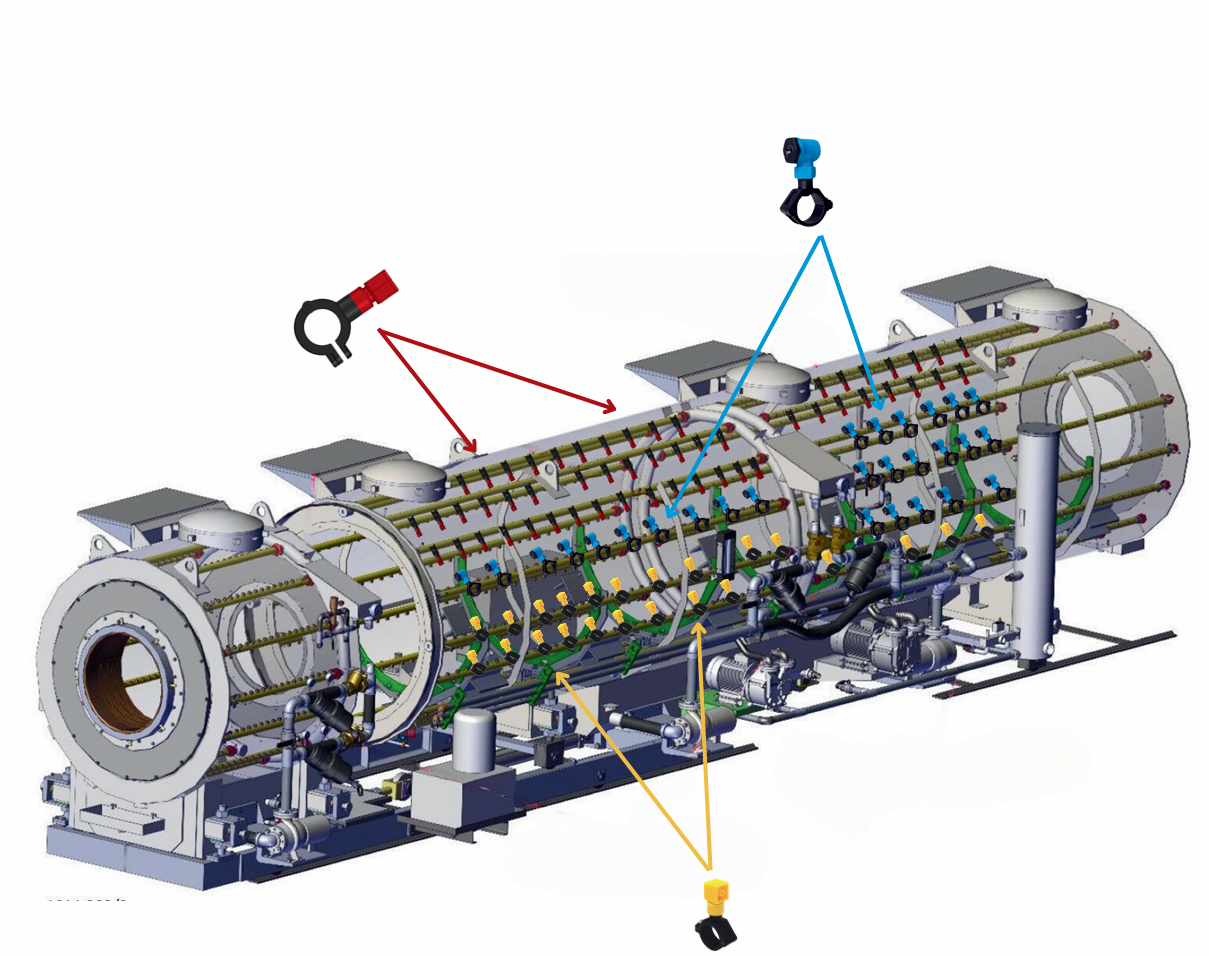
Differences Between Extrusion Vacuum Tank and Cooling Tank

Extrusion vacuum tanks and cooling tanks are essential equipment commonly used in industrial production processes, particularly in the manufacturing of plastics, rubber, films, and other similar materials. While both types of tanks are used to cool and shape materials, they have distinct differences in function, technology, and processing methods. Here's a detailed breakdown of the differences between these two tank types:
1. Primary Function and Purpose
Extrusion Vacuum Tank:
An extrusion vacuum tank is primarily used to shape, cool, and smooth products that have been extruded. It provides a vacuum environment that cools the material after it exits the extrusion line. The vacuum removes excess moisture and surface imperfections, ensuring a smooth and consistent finish. Vacuum tanks are commonly used for high-volume products like films, pipes, and sheets.
Cooling Tank:
A cooling tank is a simpler system designed to cool extruded materials. It typically uses a cooling medium like water or air to rapidly reduce the material's temperature. Cooling tanks do not create a vacuum and rely on direct contact with the cooling medium. Their primary function is to quickly cool the material and allow it to solidify into its desired shape.
2. Operating Principle
Extrusion Vacuum Tank:
An extrusion vacuum tank operates by combining a liquid cooling medium and vacuum pressure. The extruded material, which is hot and flexible, enters the tank. The vacuum pulls moisture and vapor from the material's surface, aiding in rapid cooling and shaping. The cooling liquid, usually water, provides additional cooling without penetrating deep into the material.
Cooling Tank:
Cooling tanks operate on a simpler principle. The hot extruded material is immersed in or sprayed with a cooling liquid. The liquid rapidly absorbs heat from the material, causing it to cool and solidify.
3. Applications
Extrusion Vacuum Tank:
Production of plastic pipes and profiles
Production of plastic sheets and films
Applications requiring high-quality surfaces and precise dimensions
Processes involving high-speed extrusion machines
Cooling Tank:
General plastic cooling processes
Film and sheet production (non-vacuum applications)
Lower-speed and less demanding applications
Cooling of metal and plastic surfaces
4. Structural Differences
Extrusion Vacuum Tank:
Vacuum tanks have a more complex structure. They include a vacuum pump, water circulation systems, temperature control units, and sometimes cooling water systems. The tank's interior is typically smooth and airtight to maintain vacuum pressure. The tank's inner surface is often made of high-quality stainless steel to withstand moisture and high temperatures.
Cooling Tank:
Cooling tanks have a simpler design and consist primarily of a large water reservoir, pumping systems, and temperature control units. Water circulates through the tank to cool the material. Some systems may include mechanical devices to increase the surface area of contact between the water and the material.
5. Energy Efficiency and Cost
Extrusion Vacuum Tank:
Vacuum systems require more energy and equipment, but they offer higher efficiency. The vacuum environment enables faster cooling and better shaping. These systems are preferred for high-speed and high-quality production processes.
Cooling Tank:
Cooling tanks are generally more energy-efficient as they do not require vacuum systems. However, their cooling efficiency relies solely on the cooling medium and may not achieve the same level of surface quality as vacuum tanks.
6. Cost and Maintenance
Extrusion Vacuum Tank:
Vacuum tanks are more expensive due to the specialized equipment required. Maintenance is also more complex and requires regular inspections. However, they are ideal for applications with high-quality requirements.
Cooling Tank:
Cooling tanks are less expensive and easier to maintain. They are a suitable choice for applications with lower quality requirements.
Conclusion
The primary differences between extrusion vacuum tanks and cooling tanks lie in their functions, operating principles, and complexity. Vacuum tanks provide superior cooling and shaping capabilities for high-quality products, while cooling tanks offer a simpler and more cost-effective solution for general cooling applications. The choice between the two depends on the specific requirements of the production process, including quality standards, speed, and cost.











